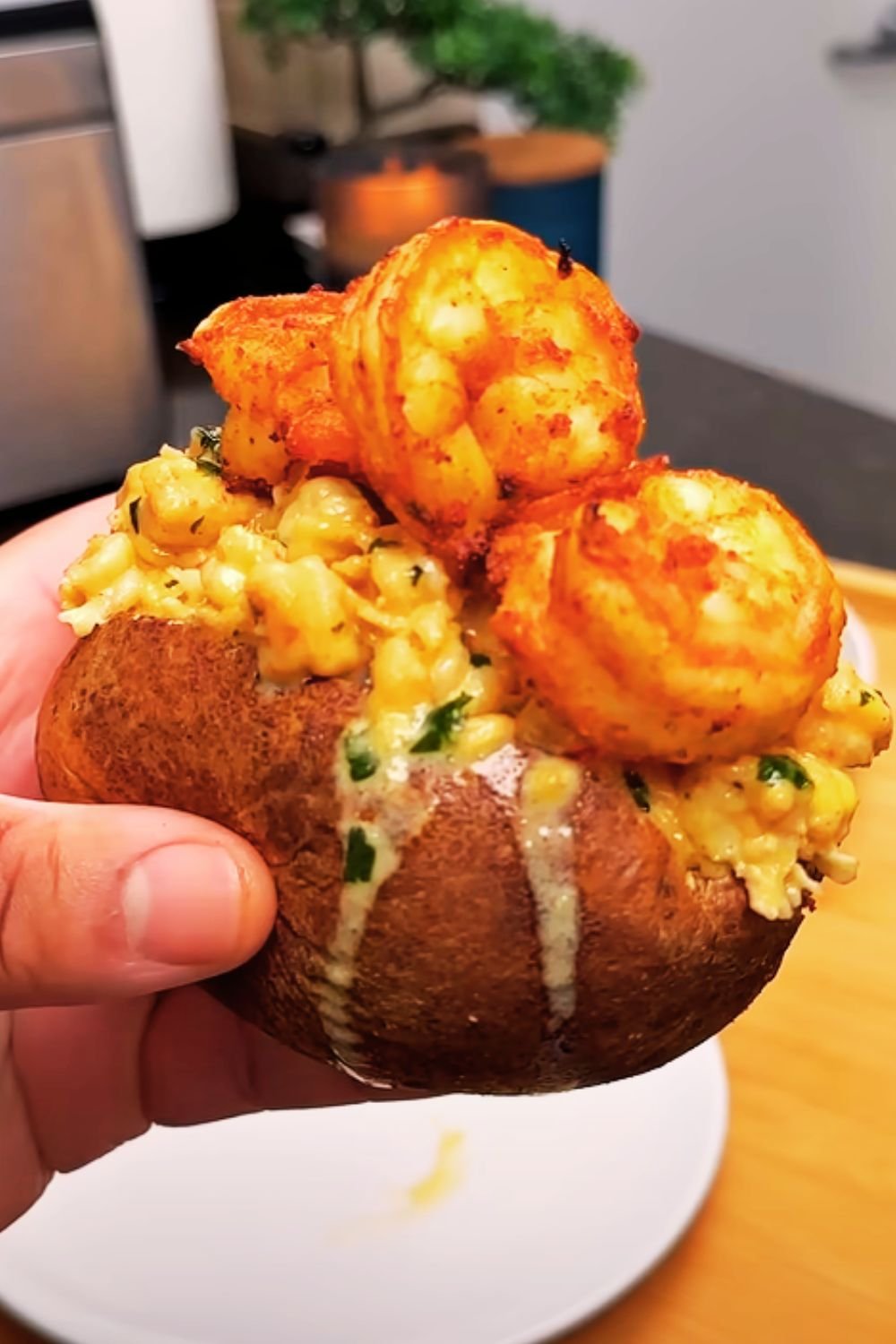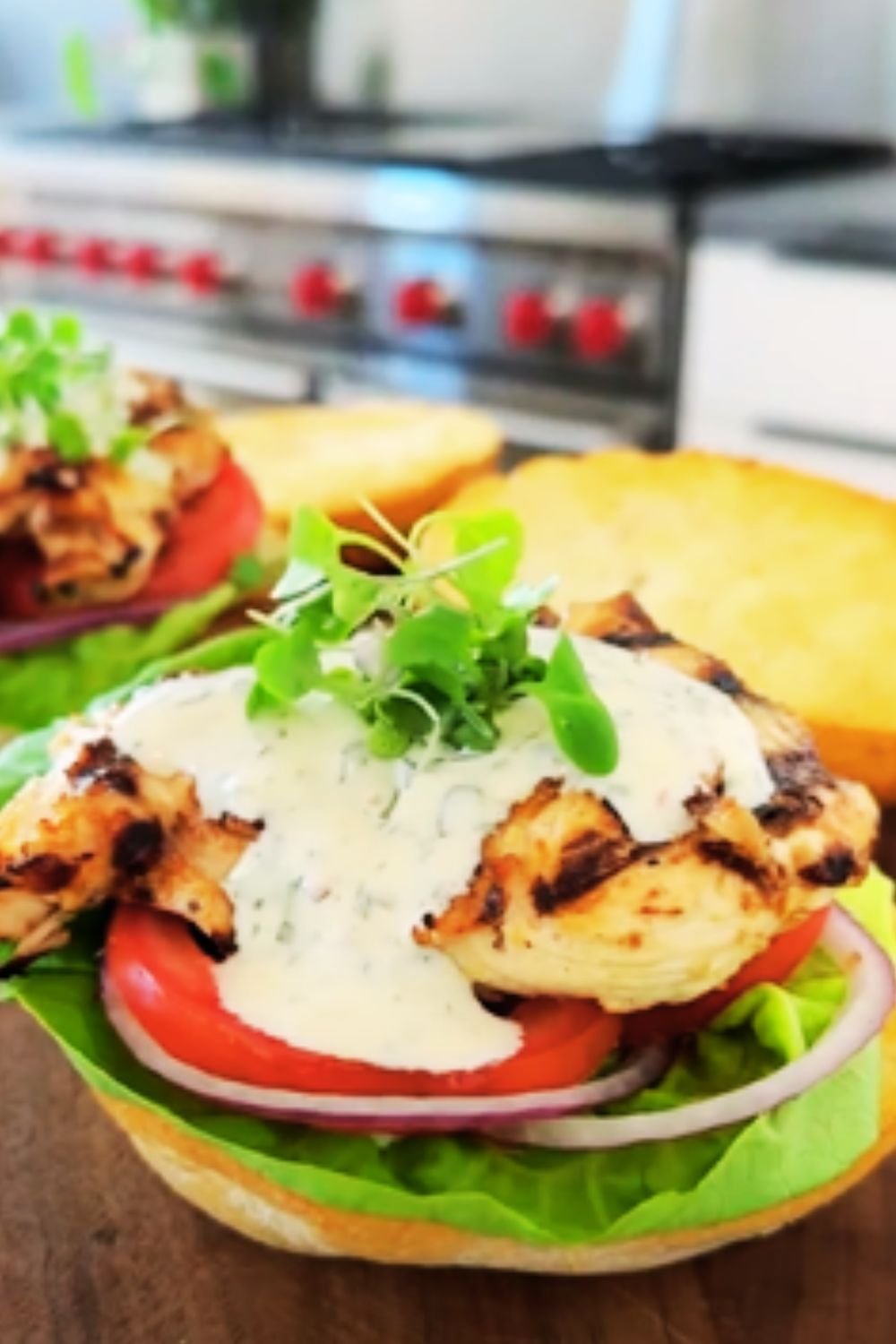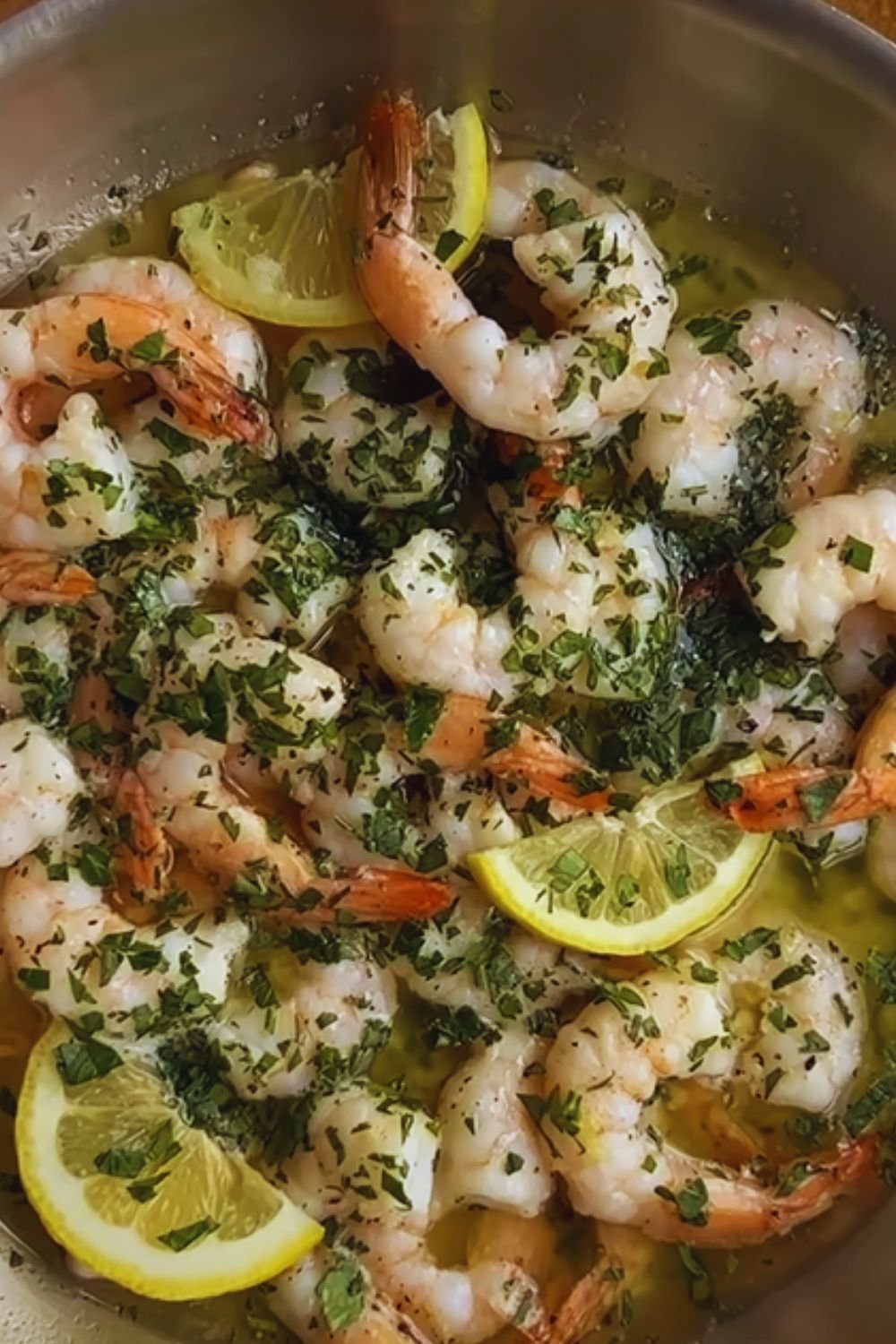There’s something incredibly satisfying about a perfectly baked potato – that crispy skin giving way to fluffy, steaming insides. But when you’re looking to elevate this humble staple into something truly special, nothing compares to loading it with succulent seafood. Today, I’m sharing my absolute favorite recipe for Seafood Stuffed Potatoes that transforms everyday spuds into an extraordinary culinary experience.
I discovered this delectable creation during a coastal vacation when a local chef served something similar at a beachside restaurant. The combination of creamy potato with delicate seafood was so memorable that I spent months perfecting my own version at home. What makes this dish truly special is how it marries rustic comfort food with elegant seafood in a way that feels both indulgent and approachable.
Whether you’re planning a special dinner, looking to impress guests, or simply want to treat yourself to something luxurious, these Seafood Stuffed Potatoes deliver restaurant-quality results right in your home kitchen. Let me walk you through creating this showstopper dish that’s sure to become a new favorite.
What Makes These Seafood Stuffed Potatoes Special?
These aren’t your typical twice-baked potatoes. Here’s what sets this recipe apart:
- Perfect Texture Contrast: Crispy potato skins, fluffy potato interior, and tender seafood create a delightful textural experience.
- Balanced Flavors: The natural sweetness of seafood pairs beautifully with the earthy potato and rich, creamy filling.
- Versatility: Can be served as an impressive appetizer or a satisfying main course.
- Make-Ahead Friendly: Most components can be prepared in advance, making this perfect for entertaining.
- Customizable: Works with various seafood combinations based on what’s fresh and available.
Ingredients You’ll Need
For the Potatoes:
- 4 large russet potatoes (about 10-12 oz each)
- 2 tablespoons olive oil
- 1 tablespoon sea salt (for rubbing on skins)
- 3 tablespoons butter, softened
- 1/4 cup sour cream
- 1/4 cup whole milk, warmed
- 1/2 teaspoon garlic powder
- Salt and freshly ground black pepper to taste
For the Seafood Filling:
- 8 oz lump crab meat, carefully checked for shells
- 8 oz medium shrimp, peeled, deveined and chopped into 1/2-inch pieces
- 6 oz bay scallops (or larger scallops cut into smaller pieces)
- 2 tablespoons butter
- 1 tablespoon olive oil
- 3 cloves garlic, minced
- 1 small shallot, finely diced
- 2 tablespoons fresh lemon juice
- 1/4 cup dry white wine
- 1 tablespoon fresh dill, chopped
- 1 tablespoon fresh parsley, chopped
- 1 teaspoon fresh thyme leaves
- 1/4 teaspoon cayenne pepper (adjust to taste)
- 1/4 cup heavy cream
For the Topping:
- 1 cup sharp cheddar cheese, freshly grated
- 1/2 cup Gruyère cheese, freshly grated
- 3 tablespoons Parmesan cheese, finely grated
- 2 tablespoons fresh chives, finely chopped
- 1 tablespoon breadcrumbs (preferably panko)
- Lemon wedges for serving
- Additional fresh herbs for garnish
Equipment Needed
Before we begin, make sure you have:
- Baking sheet
- Aluminum foil
- Large mixing bowl
- Potato masher or fork
- Sharp knife
- Cutting board
- Large skillet
- Measuring cups and spoons
- Cheese grater
- Small mixing bowl (for cheese topping)
Step-by-Step Instructions
Preparing and Baking the Potatoes
- Preheat your oven to 400°F (200°C).
- Thoroughly wash the potatoes and pat them dry with paper towels.
- Using a fork, pierce each potato several times on all sides to allow steam to escape during baking.
- Rub each potato with olive oil and sprinkle generously with sea salt.
- Place the potatoes directly on the oven rack or on a foil-lined baking sheet.
- Bake for 45-60 minutes, or until the skin is crispy and a knife inserted into the center meets minimal resistance.
- Remove from the oven but keep the oven on (you’ll need it again later).
Preparing the Seafood Filling

While the potatoes are baking, prepare your seafood filling:
- Melt butter and olive oil in a large skillet over medium heat.
- Add the diced shallot and cook until translucent, about 2-3 minutes.
- Add the minced garlic and cook for another 30 seconds until fragrant.
- Pour in the white wine and lemon juice, bring to a simmer, and let reduce by half, about 3-4 minutes.
- Add the shrimp and scallops to the skillet. Cook for 2-3 minutes until they just begin to turn pink and opaque.
- Gently fold in the crab meat (since it’s already cooked, you just want to warm it through).
- Stir in the fresh herbs, cayenne pepper, and heavy cream.
- Simmer for 1-2 minutes until the sauce thickens slightly. Season with salt and black pepper to taste.
- Remove from heat and set aside while you prepare the potato shells.
Creating the Potato Shells
- Once the potatoes are cool enough to handle (but still warm), cut each one in half lengthwise.
- Using a spoon, carefully scoop out the interior of each potato half, leaving about 1/4 inch of potato attached to the skin to help maintain the structure.
- Place the scooped potato flesh in a large mixing bowl.
Making the Potato Filling
- To the bowl with the potato flesh, add butter, sour cream, and warm milk.
- Mash until smooth and creamy.
- Stir in the garlic powder, salt, and pepper.
- Gently fold about 1/3 of the seafood mixture into the mashed potatoes until just combined.
Assembling the Stuffed Potatoes
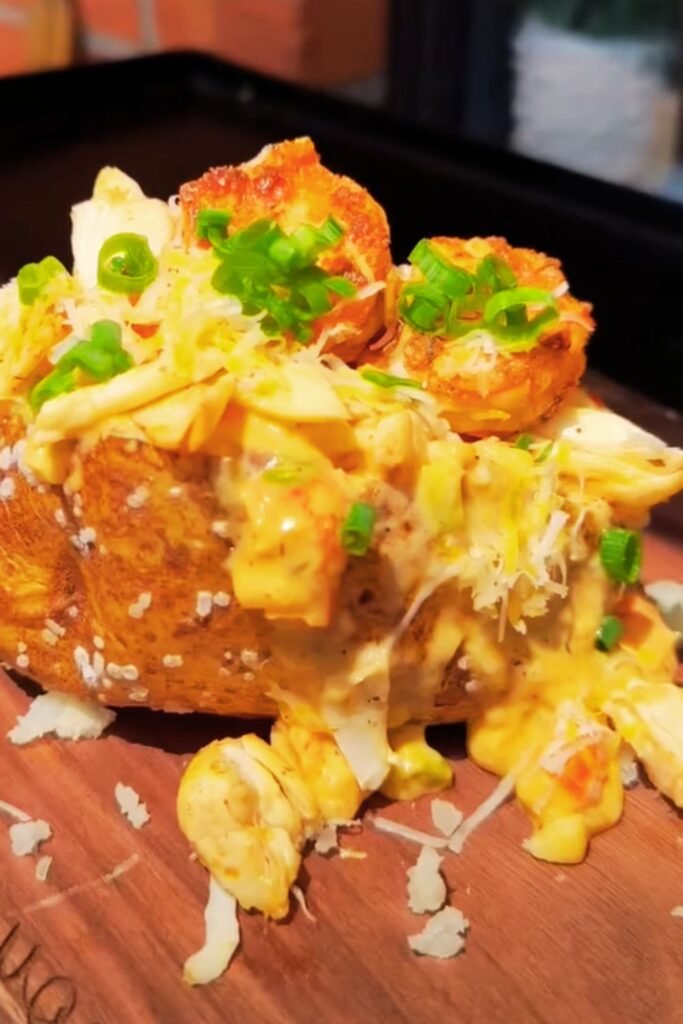
- Arrange the potato skins on a baking sheet.
- Spoon the potato-seafood mixture back into each potato shell, filling them generously.
- Top each filled potato with a portion of the remaining seafood mixture.
Preparing and Adding the Topping
- In a small bowl, combine the cheddar, Gruyère, and Parmesan cheeses with the chopped chives and breadcrumbs.
- Sprinkle this mixture evenly over each stuffed potato.
Final Baking
- Return the stuffed potatoes to the oven and bake for 15-20 minutes until the cheese is melted, bubbly, and beginning to brown.
- For an extra golden top, broil for the final 1-2 minutes, watching carefully to prevent burning.
Serving
- Allow the potatoes to cool for 5 minutes before serving.
- Garnish with additional fresh herbs and serve with lemon wedges on the side.
Nutritional Information
Here’s the approximate nutritional breakdown per serving (one stuffed potato half):
| Nutrient | Amount |
|---|---|
| Calories | 385 |
| Protein | 23g |
| Carbohydrates | 32g |
| Fat | 19g |
| Saturated Fat | 11g |
| Cholesterol | 95mg |
| Sodium | 680mg |
| Fiber | 3g |
| Sugar | 2g |
| Calcium | 280mg |
| Iron | 2mg |
| Vitamin A | 585 IU |
| Vitamin C | 12mg |
Variations to Try
Mediterranean Style
- Use shrimp and scallops
- Add chopped sun-dried tomatoes
- Incorporate olives and feta cheese
- Season with oregano and lemon zest
Cajun Inspired
- Use crawfish, shrimp, and andouille sausage
- Add bell peppers and celery to the filling
- Season with Cajun spice blend
- Top with pepper jack cheese
New England Style
- Use lobster as your primary seafood
- Add corn kernels to the filling
- Season with Old Bay seasoning
- Finish with a drizzle of brown butter
Common Pitfalls and How to Avoid Them
| Potential Issue | Prevention Tips |
|---|---|
| Seafood becomes rubbery | Cook seafood just until it begins to turn opaque; it will continue cooking in the oven |
| Potato skins tear or collapse | Leave 1/4 inch of potato attached to the skin for structural support |
| Filling is too runny | Allow the seafood mixture to simmer until sauce thickens; drain excess liquid if necessary |
| Uneven cooking | Ensure potatoes are similar in size; rotate baking sheet halfway through cooking time |
| Filling is bland | Season at multiple stages: the potato mixture, the seafood mixture, and final taste test |
| Cheese burns | Add cheese topping in the final 10-15 minutes of baking or broil carefully at the end |
Make-Ahead and Storage Tips
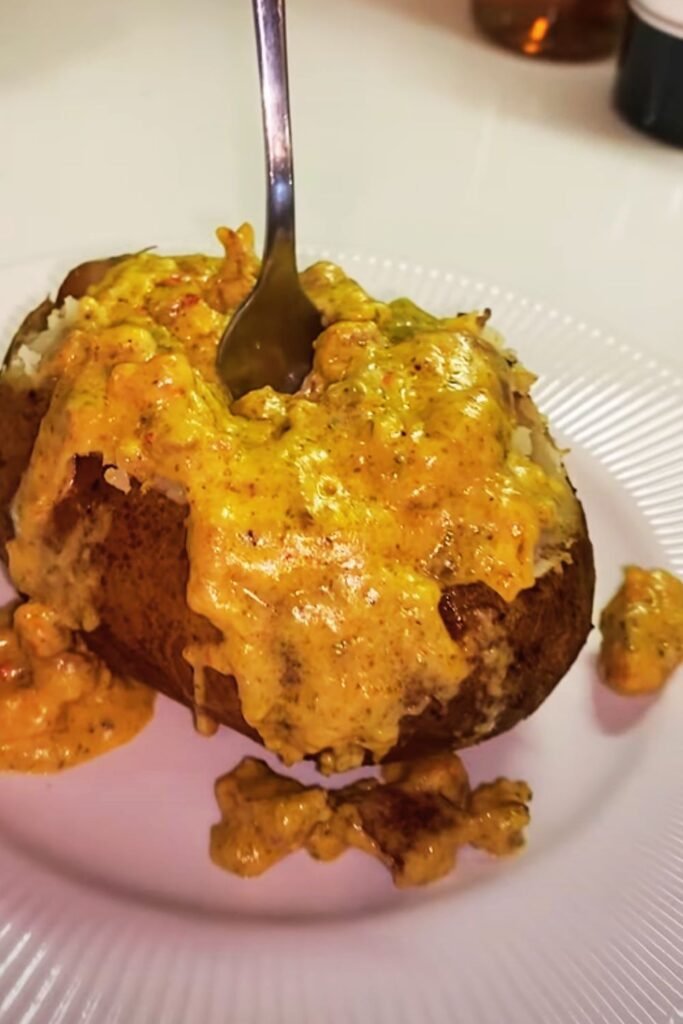
Make-Ahead Options:
- Bake and scoop potatoes up to 2 days ahead; refrigerate shells and flesh separately
- Prepare seafood filling 1 day ahead and refrigerate
- Assemble completely up to 4 hours before baking, then refrigerate
Storage:
- Refrigerate leftover stuffed potatoes in an airtight container for up to 2 days
- Not recommended for freezing as seafood and dairy can separate and become watery
Reheating:
- Oven method (preferred): Reheat at 350°F for 15-20 minutes until heated through
- Microwave: Use 50% power in 1-minute increments until warmed through
Serving Suggestions
These Seafood Stuffed Potatoes can be served in multiple ways:
As a Main Course:
- Pair with a simple green salad dressed with lemon vinaigrette
- Serve alongside roasted asparagus or steamed broccoli
- Add a small cup of clear seafood bisque for an elegant dinner
As an Appetizer:
- Use smaller potatoes and serve one half per person
- Accompany with a crisp white wine
- Arrange on a platter with lemon wedges and extra herbs
For a Special Occasion:
- Create a seafood bar where guests can choose their toppings
- Serve alongside other seafood appetizers for a themed gathering
- Prepare individual ramekins of drawn butter for dipping
Cost-Saving Tips
Seafood can be expensive, but there are ways to make this dish more budget-friendly:
- Watch for sales and buy seafood when it’s discounted
- Use frozen seafood (thawed properly) instead of fresh
- Substitute more expensive seafood with additional shrimp
- Make a larger batch of the potato base and use less seafood per serving
- Check local fish markets for “seafood mix” options which are often more affordable
- Consider using canned crab when lump crab is too expensive
Frequently Asked Questions
Q: Can I use different types of potatoes?
While russet potatoes are ideal because of their starchy texture and sturdy skins, you can substitute Yukon Gold potatoes for a slightly more buttery flavor. Sweet potatoes are another interesting alternative that pair well with the seafood, though they’ll create a different flavor profile.
Q: How do I know when the seafood is properly cooked?
Shrimp and scallops should be just opaque and firm to the touch, but still tender. Overcooked seafood becomes rubbery and tough. Remember that the seafood will continue cooking slightly during the final baking phase, so it’s better to slightly undercook it during the initial sauté.
Q: Can I make this dish without dairy?
Yes! You can substitute the dairy components with alternatives: use olive oil instead of butter, coconut cream instead of heavy cream and sour cream, and dairy-free cheese for the topping. The result will have a different flavor profile but can still be delicious.
Q: What’s the best way to check crab meat for shells?
Spread the crab meat on a flat surface with good lighting. Gently separate the pieces with your fingers, feeling for any hard pieces. Take your time with this step – nothing ruins a luxurious bite faster than crunching down on a piece of shell!
Q: Can I prepare these for a larger gathering?
Absolutely! This recipe scales up well. For a party, consider using smaller potatoes to create bite-sized portions. You can partially prepare everything ahead of time and just do the final baking shortly before serving.
Q: What can I do with leftover seafood filling?
Leftover seafood filling makes an excellent topping for pasta, can be used in seafood omelets, or spread on crostini for a quick appetizer. Just be sure to refrigerate it promptly and use within 2 days.
Why This Recipe Works
I’ve spent years perfecting this recipe, and there are several culinary principles that make it successful:
- Contrasting textures: The crispy potato skin against the creamy filling creates a satisfying eating experience.
- Layered flavors: By seasoning at multiple stages and using fresh herbs, the dish develops complex flavors.
- Proper cooking techniques: Briefly cooking the seafood before the final bake ensures it remains tender and perfectly cooked.
- Balanced moisture: The sour cream and butter in the potato mixture provide richness without making it soggy.
- Complementary ingredients: The seafood, dairy, and herbs work together harmoniously, with each element enhancing the others.
The true secret to this recipe’s success lies in respecting each ingredient. The potatoes provide a neutral canvas, the seafood brings its natural sweetness and delicate texture, and the cheeses add richness and umami. When these elements come together, they create something truly greater than the sum of their parts.

My Personal Tips
After making this dish countless times, I’ve collected a few insider tips that make a significant difference:
- Pat the seafood dry before adding it to the skillet to promote better browning and prevent a watery filling
- Warm your milk before adding it to the potato mixture for smoother incorporation
- Use fresh seafood whenever possible for the best flavor and texture
- Reserve a few pieces of the most attractive seafood to place on top as a garnish
- Let the potatoes rest for 5 minutes after the final baking to allow the flavors to settle
- Use a combination of cheeses rather than just one type for more complex flavor
- If serving as a main course, consider placing the stuffed potatoes on a bed of lightly dressed arugula to cut through the richness
I’ve found that these small touches elevate the dish from good to memorable, and they’re worth the extra moment of attention.
Final Thoughts
Seafood Stuffed Potatoes represent comfort food at its most elegant. They bridge the gap between rustic home cooking and sophisticated dining, making them perfect for almost any occasion. While they do require several steps to prepare, none of them are particularly difficult, and the payoff is well worth the effort.
What I love most about this dish is how impressive it looks despite being quite straightforward to make. It’s one of those recipes that appears far more complex than it actually is, which makes it perfect for entertaining or special family dinners.
I hope you enjoy making and eating these Seafood Stuffed Potatoes as much as I do. They’ve become a signature dish in my home, requested for birthdays and special occasions, and never failing to draw appreciative comments from even the most discerning guests.
Remember that cooking should be a joy, not a stress. Take your time with each step, taste as you go, and most importantly, have fun creating something delicious!
